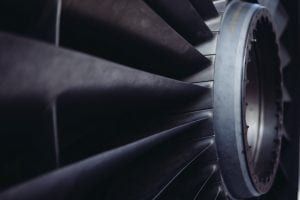Airlines are facing a call for an international criminal inquiry into toxic exposure of crew and passengers.
Campaigners are calling on anybody who may have suffered ill health linked to chemicals on board passenger jets to be part of an international inquiry into toxins in cabin air.
John Hoyte, chairman of the Aerotoxic Association told The London Economic that he wants the International Criminal Court at the Hague to look at “decades of evidence” and whether passenger airlines are knowingly allowing people to breathe in unsafe air on passenger planes.
The Aerotoxic Association says it has been contacted by 2,500 potential victims who have suffered serious health problems they associate with toxic fumes on passenger planes.
With airlines facing court cases around the world – often settled out of court, the association wants the International Criminal Court to investigate whether enough precautions are taken to ensure that the air we breathe in the majority of passenger aircraft is safe.
Boeing’s latest fleet of 787 Dreamliners have been designed with separate air intakes for engine and cabin. Boeing designed the high tech new air intake system after settling a lawsuit with a former flight attendant suffering from serious health symptoms for an unspecified sum.
But in every other design of passenger jet, cabin air is a mix of recycled air and compressed air drawn from around the engines – known as “bleed air.”
According to the Aerotoxic Association seals on passenger jet engines do not always keep bleed air safe from a cocktail of toxic chemicals given off by organophosphates in aircraft engine lubricant superheated by the burning airline fuel.

There have been many reported cases of “fume events” where visible fumes have grounded planes and caused physical symptoms such as fainting, headaches and nausea. But more medial cases attributing long term conditions to long-term lower level exposure are also being documented.
Last year, new research published in a World Health Organisation journal linked breathing toxic cabin air with cancer, chronic fatigue and neurological problems.
“At last we are beginning to see some action to tackle this in France and the USA, with two airlines now looking to protect their passengers and crew with air filters reminiscent of the tobacco industry filtering cigarettes in the 1950’s,” said John Hoyte.
“EasyJet has changed engine oil to a safer formulation and will fit ‘bleed air’ filters and nerve agent detectors to all of their aircraft, because of an ongoing French criminal court case.
“In addition, the modern Boeing 787 Dreamliner uses separate air intakes, rather than bleed air from the engines, which completely avoids the poisoning.
“Yet despite decades of evidence and scientific research, air passengers are still put at risk every day from this preventable danger.”
The former BAe training captain said that with airlines now facing criminal court cases over cabin crews’ health problems now was the time for an independent international inquiry to protect the 3 billion passenger flights each year and the crews that fly them.
He said that the aviation industry has known about the health risks of toxins in bleed air since the 1950s but chosen to hide the “mounting evidence.”
“The solutions are available today,” John Hoyte told The London Economic. “EasyJet are putting in the known solution of filtering the air, as are Spirit Airlines in the US.
“So there is no excuse when crew are dropping like flies.”
Last year, new research published in a World Health Organisation journal found that breathing toxic cabin air was linked to cancer, chronic fatigue and neurological problems. The report found air contaminated by engine oil can “reasonably be linked to acute and chronic symptoms”.
According to a University College London study by Dr Sarah McKenzie Ross over 196,000 passengers a year could potentially present GP’s with symptoms of acute toxicity.
It has also been revealed that after many have been hospitalised from such events the NHS has actually set up a “care pathway” for victims of aircraft fume events with a specialist clinic at St Thomas’ Hospital in London.
The Civil Aviation Authority admitted in a note about this new move: “there is strong evidence that some people experience acute symptoms as a consequence of fume events.”
Yet the Civil Aviation Authority, and the aviation industry too continue to deny a link between contaminated cabin air and symptoms that have been dubbed ‘aerotoxic syndrome,’ linked to the deaths of several pilots and air crew.

Aerotoxic Association founder John Hoyte said that the International Criminal Court in The Hague should now assess whether safety solutions should be put in place.
“The airlines continue to claim there is no positive evidence so after 70 years of so much evidence it requires a public court to look into all the evidence to decide.
“EasyJet are in a criminal court in Paris at the moment and it is a criminal matter if they are knowingly poisoning their crews and passengers.
“They have been taken to court by three of their aircrew for knowingly allowing them to be poisoned.“
“Our target is low, medium and high booking point VOC’s (Volatile Organic Compounds), and we are particularly focussing on medium and high boiling point ones,” the company’s Vice President David Stein told The London Economic, explaining how their HEPA filters work.
The company has also developed a sensor for use in aircraft – an “electronic nose to detect VOC’s, oil, de-icing fluid or hydraulic fluid.” All these chemicals found in passenger jets contain toxins, especially when exposed to high temperatures and combined together.
An easyJet spokesperson told The London Economic: “easyJet is working with Pall to identify and reduce incidents of unusual smell and fumes in the cabin – these events can have short term effects on health and can lead to flight disruption.
“This has no link with the study of whether any form of long-term illness occurs in airline crew due to exposures to cabin air.
“Independent medical research has found no evidence for any such link and that concluded that long-term toxic effects would not be expected.”
Yet Dr Astrid Heutelbeck who has spent the past few years attending to patients suffering pulmonary, neurological and cerebral symptoms after flights with suspected cabin air contamination at the University of Gottingen, Germany, told The London Economic that she has treated around 500 patients.
“The specific pattern we are seeing is firstly lung injury – the lung’s breathing mechanism is fine, but there are problems getting the oxygen out of the air,” said Dr Heutelbeck. She said she sees a common pattern of symptoms related with neurotoxicity and small fibre nerve damage.
Some of her patients have been exposed to fume events, other exhibit similar symptoms from repeated exposure to cabin air.
Dr Heutelbeck has also been treating passengers who are frequent flyers as well.
Former pilot John Hoyte said that anyone wanting more info or suspecting they have suffered symptoms after breathing in cabin air should visit the Aerotoxic Association website and that evidence should be submitted via the website ot to the Aerotoxic Association at [email protected], including contact details and marked for the attention of “The International Criminal Court, The Hague, The Netherlands”.
